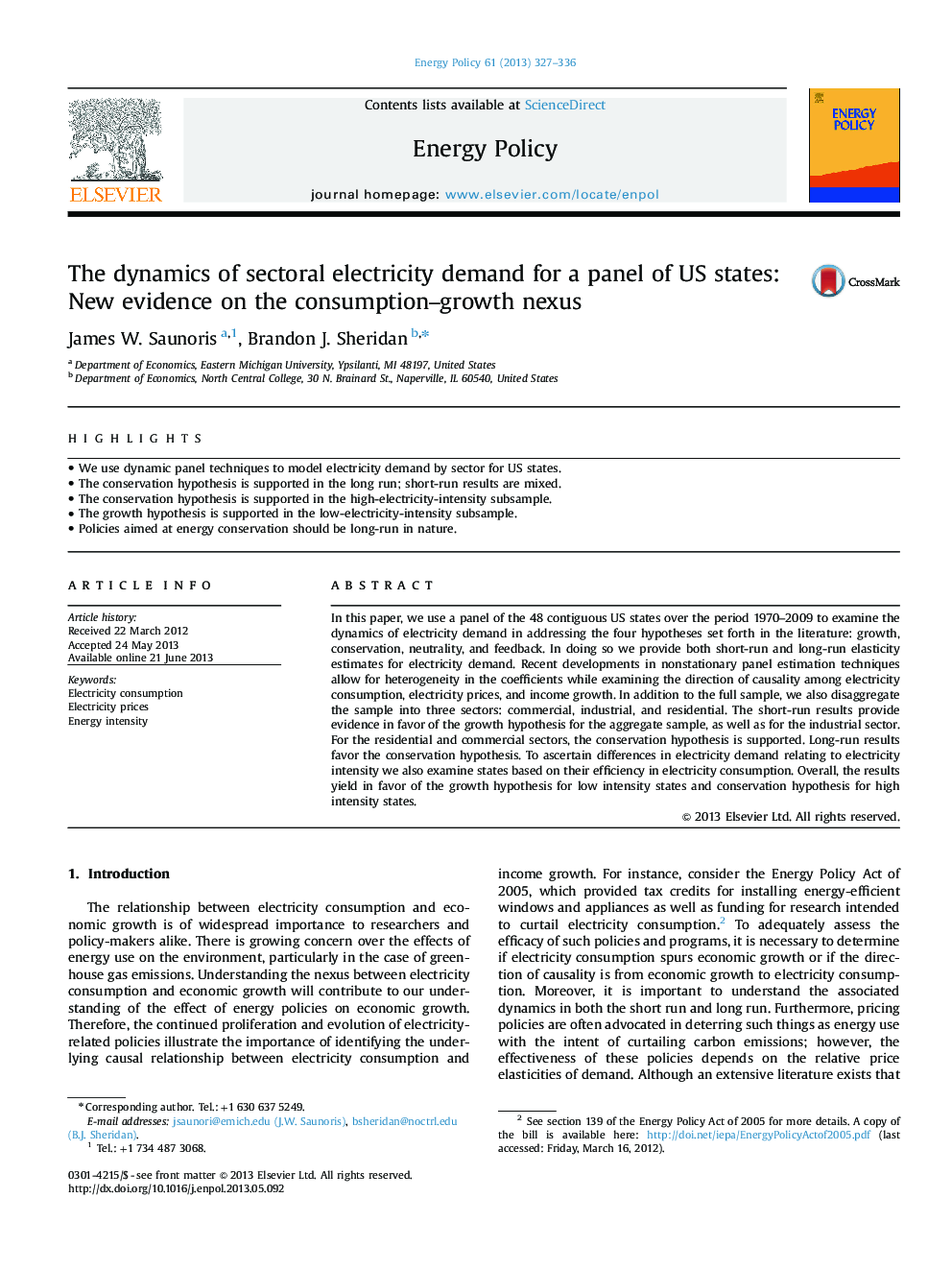| Article ID | Journal | Published Year | Pages | File Type |
|---|---|---|---|---|
| 7404169 | Energy Policy | 2013 | 10 Pages |
Abstract
In this paper, we use a panel of the 48 contiguous US states over the period 1970-2009 to examine the dynamics of electricity demand in addressing the four hypotheses set forth in the literature: growth, conservation, neutrality, and feedback. In doing so we provide both short-run and long-run elasticity estimates for electricity demand. Recent developments in nonstationary panel estimation techniques allow for heterogeneity in the coefficients while examining the direction of causality among electricity consumption, electricity prices, and income growth. In addition to the full sample, we also disaggregate the sample into three sectors: commercial, industrial, and residential. The short-run results provide evidence in favor of the growth hypothesis for the aggregate sample, as well as for the industrial sector. For the residential and commercial sectors, the conservation hypothesis is supported. Long-run results favor the conservation hypothesis. To ascertain differences in electricity demand relating to electricity intensity we also examine states based on their efficiency in electricity consumption. Overall, the results yield in favor of the growth hypothesis for low intensity states and conservation hypothesis for high intensity states.
Related Topics
Physical Sciences and Engineering
Energy
Energy Engineering and Power Technology
Authors
James W. Saunoris, Brandon J. Sheridan,
